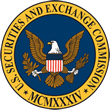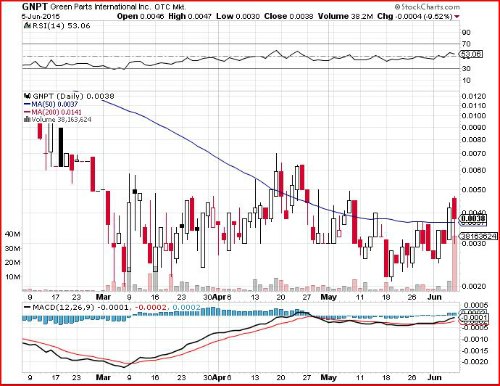SEC Forms and Common EDGAR Filings

SEC Forms and EDGAR filings are about as exciting as an insurance seminar, but if the right filing hits and you're the fastest to determine what it means...You can quickly avoid a disaster trade or, when it's good, be the first to get the money!
There are lots of different SEC forms...LOTS...but there are really only a handful that you'll see on a fairly regular basis trading penny stocks. Some of these lead to explosive moves in share price and others, well, not so much.
The other "not so much" ones are important though as they might be a signal of a future action, like some form dilutive financing arrangement and/or reverse split (neither is usually considered a positive).
Get to know Forms 10 (10Q and 10K) and 8K filings. These are the most common movers of penny stocks...
Up or Down!
What is an EDGAR Filing?
EDGAR filings are simply an automated way for publicly traded companies to file required forms with the SEC. EDGAR streamlines the process and automatically verifies and accepts information so a human being doesn't have to analyze each and every one of the thousands of documents filed daily...
What are the SEC Forms
10K and 10Q?
The Form 10K is the annual financial report that is due out no later than 90 days from the end of the fiscal year. The Form 10Q is the quarterly report that comes out every three months and is filed within 45 days of the end of the quarter. Both of these SEC Forms cover similar information, but on different timelines.
The tier that the company lists in on the OTC Markets will determine if filing a Form 10K or 10Q is even necessary and/or needs to be audited. It works like this:
- Pink - No Information (Stop Sign): No filing is required.
- Pink - Limited Information (Yield Sign): No filing is required.
- Pink - Current: Regular Quarterly and Annual reports are due as stated above. Neither has to be audited.
- OTCQB - Regular Quarterly and Annual reports are due as stated above. The annual 10K must be audited, but the quarterly 10Q does not.
- OTCQX - Regular Quarterly and Annual reports are due as stated above. The annual 10K and the quarterly 10Q must be audited.
What is in the SEC Forms 10K and 10Q?
A common index would look like this:
Part I
- Description of Business (historically and currently)
- Risk Factors
- Description of Properties
- Legal Proceedings
- Submission of Matters to a Vote of Security Holders
Part II - Market for Registrant's Common Equity and Related Stockholder Matters
- Management's Discussion and Analysis of Financial Condition or Plan of Operations
- Disclosures About Market Risk
- Financial Statements (Sometimes as Exhibits at the End)
- Changes in and Disagreements with Accountants
- Controls and Procedures
Part III - Directors, Executive Officers and Corporate Governance
- Executive Compensation
- Security Ownership of Certain Beneficial Owners and Management
- Certain Relationships and Related Matters
- Exhibits and Reports on Form 8K
- Principal Accounting Fees
Okay...I'm back from a quick nap! Sorry, but I just can't help getting sleepy talking about such an interesting topic. Here Comes the GOOD Stuff Though!
Like I mentioned, it's not the most exciting subject, but there can be some really good stuff in these SEC Forms. Depending on how new you are to this stock, will really depend on what some of the most important sections are for you.
The Description of Business section would obviously be a good place to start if you know nothing about the company. On the other hand, if you already know a bit about them, then...
The most important information in the SEC Forms 10K and 10Q for a penny stock trader is typically found in:
- Management's Discussion
Usually good to see where they are going or plan to in the future and this where you might find a great nugget that can get the stock moving! - Financial Statements
First, are the financials audited or unaudited (take unaudited financials with a grain of salt), check earnings (if any) and compare them year over year (YoY), have they improved, how much do they lose, do they have cash on hand, what liabilities do they have (most notably any convertible debt that may be exercisable in the near future), how many shares have they issued for payment, has the outstanding share count increased, etc. - Executive Compensation
Are they fleecing the company with huge salaries to themselves with limited revenues? - Security Ownership
What is management's stake in company? Do they have a vested interest in seeing the share price go up? - Discussion of Form 8K Filings
Here you might find an expansion on a previously announced Letter of Intent, Acquisition, Merger and other juicy stuff!
My suggestion is to familiarize yourself with the layout of these SEC forms...These have great potential to move a stocks price in one direction or another.
Keep in mind, that we are playing hype and typically not trying to invest for the long term in a company...Look for hype like material events and don't focus too much on earnings as most OTC stocks don't have any and/or when they do they tend to show large losses.
Ultimately, hype, share count and convertible notes (which lead to dilution) are our main concerns.
SEC Form 8k
The 8K is a disclosure of material events effecting a companies operations. The 8K must be filed within four business days of the event. These can include events like:
- Mergers and Acquisitions (really good usually)
- Changes in Control of Registrant (this can be a good thing)
- Change in Shell Company Status (this can be a good thing)
- Entry or Termination of a Material Definitive Agreement (can go both ways)
- Some Sort of Financial Obligation (not usually a good thing)
- Bankruptcy (rarely a good thing)
- Notice of Delisting (Definitely not good)
- Submission of Matters to a Vote of Security Matters (often done when they are going to raise the Authorized Share Count)
- Other Events the company Deems Material, but are not required by the SEC.
SEC Forms 10, S1 and Reg D
Without getting too long winded on these SEC forms, I'll simply state the to some degree each one of these is essentially a filing to either initially get listed or to sell shares.
Selling shares doesn't always mean it's a bad thing (convertible debt is bad and excessive selling of shares is bad) as for instance, the S1 is used when a company is looking to raise money for a specific project(s). Let's quickly define each of these.
- Form 10
Similar to the 10K annual report in the information that is provided, but this form is geared towards the "registration of securities." - Form S1
The S1 is the initial registration used to offer shares to the public for a specific planned use. There is also an S3 which is a more simplified version of the S1. - Regulation D
This is an exemption that allows companies to sell shares without having to register those shares with the SEC.
They are very similar in what each does, but it is, for the most part, a different way to do the same thing.
SEC Forms 3 and 4
Anytime (for reporting companies) there is a change in the beneficial ownership of a companies stock of 10% or more a Form 3 must be filed. This happens when maybe a new director comes on board and is given a percentage of the company as part of his/her incentive package and/or if an investors buys a large % of the company.
The Form 4 tells what insiders are doing with their shares. For instance, are they selling their shares or buying more? When insiders buy more this is usually perceived as being a very positive sign and conversely when they sell it is perceived as being a negative.
Form 13G
The 13G is used to report ownership of a companies stock of 5-20%...This can signal a convertible note and massive shares about to hit the market, especially when you XYZ Financial/Holdings/Investments has taken a position not to exceed 9.99%.
Owning no more than 9.99% keeps these toxic financiers from being considered insiders and having to follow the Form 4 rules from above. This way they can dump and dump and dump shares without the need to tell the market what they are doing and how much they are selling.
Form 15-12G
This is a notice to terminate the registration of a class of securities...Not Good! I don't care what anyone says, with the kind of penny stocks that this site focuses on, this is NOT a good thing.
This means that the company is going to essentially go dark. There will more than likely be no more news, filings, updates of any sort and the company will probably cease to exist in short order. Run for the hills is my personal opinion.
Conclusion
These are some of the most common SEC forms that you'll see, but I would certainly make your way through some different company filings and familiarize yourself with the 10K, 10Q and the 8K's. These tend to be the ones (outside of traditional press releases) that can really get a penny stock to fly high!
For more in depth descriptions of these or other forms check with the SEC here SEC Forms. Let's move on to the Best Penny Stock Brokers.
Table of Contents
Lesson 1:
What is a Penny Stock
Lesson 2:
Fundamentals
Lesson 3:
SEC Forms
Lesson 4:
Best Brokers
Lesson 5:
Risk vs Reward
Lesson 6:
Tools of the Trade
Lesson 7:
Stock Promoters
Lesson 8:
Trading Strategy
Lesson 9:
How to Find Stocks
Lesson 10:
How to Buy Stocks




